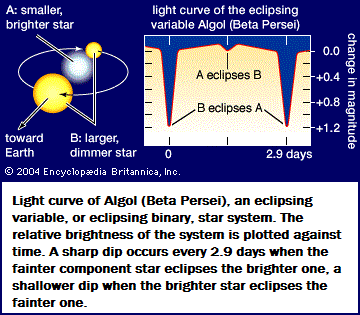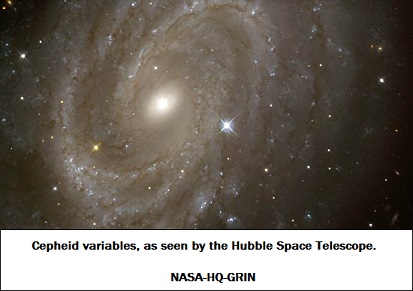
Page 32
http://threesology.org
Note: the contents of this page as well as those which precede and follow, must be read as a continuation and/or overlap in order that the continuity about a relationship to/with the typical dichotomous assignment of Artificial Intelligence (such as the usage of zeros and ones used in computer programming) as well as the dichotomous arrangement of the idea that one could possibly talk seriously about peace from a different perspective... will not be lost (such as war being frequently used to describe an absence of peace and vice-versa). However, if your mind is prone to being distracted by timed or untimed commercialization (such as that seen in various types of American-based television, radio, news media and magazine publishing... not to mention the average classroom which carries over into the everyday workplace), you may be unable to sustain prolonged exposures to divergent ideas about a singular topic without becoming confused, unless the information is provided in a very simplistic manner.
While some readers may have noticed that we have developed a three-electrode device called the transistor to offset the one-time dominant usage of the two-electrode diode, the word "triode" was used to describe a particular vacuum tube:
(A Triode is an) electron tube consisting of three electrodes—cathode filament, anode plate, and control grid—mounted in an evacuated metal or glass container. It has been used as an amplifier for both audio and radio signals, as an oscillator, and in electronic circuits. Currently, small glass triodes are used primarily in low-distortion audio amplifiers, while larger triodes, made of metal-ceramics for ruggedness, are used in radio transmitters and in the generation of radio frequency for industrial heating applications. The triode is the fundamental form of vacuum tube; variants, such as the tetrode or the pentode, incorporate additional grids. Because of its amplification function, the control grid is generally the most important and critical electrode in a vacuum tube. A small variable voltage applied to the grid can greatly modulate the flow of electrons reaching the plate. The control grid is normally a wire mesh that intercepts little or no current, even though on occasion it may be actually positive relative to the cathode. Source: "Triode." Encyclopædia Britannica Ultimate Reference Suite, 2013. |
Vacuum tubes were once called valves and valves can be referred to as gates, and gates can be referred to as doorways— or doors comparable to such terms as sliding, in/out, drawbridge (up/down), revolving, (but no diagonal forms)... from which the ideas of entry/exit points and on/off circuits may arise... all of which may lead some readers to the intended ideas of channels, hallways, footpaths, cross-roads, etc., all of which can be used to describe our journey towards the development of an Artificial Intelligence which has the capacity to out-distance humanity's biologically-based encephalization (brain) process. Like the Earth and its neighboring planets (viewed as electrical components in "relatively close" proximity), which are in a vacuum; just as the human body is a leather-like bag in which activities take place in a vacuum requiring oxygen to be transported in (albeit a bag that is porous to some degree).
And though the comparison between in and out for electricity gain and loss (usage) may be noted, the term "recycle" is not in frequent usage. While we know how to store, the idea of recycling electrical energy does not come easy to those who have been brought up in a "throwaway" culture. However, even if someone did manage to create a computer system which, when invigorated by electrical energy the energy would be self-replicating in terms of re-cycling the initial charge in a loop; those in Congress or some counter-part in a business venture would want to adopt legislation which is meant to be an impediment... unless of course they would have full control or the lion's share of production and profits. This is why many are working in secrecy to create an A.I. unit until they can master production and control... as well as promote their (assumed) altruistic cause... with force, if necessary.
Though we may adopt a computer design in which the entire internal structure is a large (unbreakable) vacuum tube (containing liquid nitrogen gas) with external connecting ports for various hardware-drive applications... or some variation thereof, we once again are met with a juncture in our path presenting us with a bipolar direction. The ON/OFF characteristic must take on some metaphysical element of design if we can not utilize some natural three-patterned event to create a trinary system... if it is at all in fact superior to a binary one. Whereas some may want to present arguments based on mathematical propositions, this does not mean we humans will ever be able to take full advantage of the design... if our present biological design inhibits such a usage.
While we may want to speculate on the cause of a binary reality... we do not actually know the extent that a binary formula in nature presented itself to basic biological materials during the presumed primordial soup. Was the predominant binary influence one of light/darkness, hot/cold (warm), dry/wet, gravity fluctuations?, or something else. And then again, did not a single, non-binary state precede a binary one? And what of the proposed trinary formula of Nature in terms of a three-patterned stroboscopic irradiation of the Sun's three "moments" (dawn-noon-dusk) accompanied by a triangular path, as the rotation of the Earth slows from its once accelerated motion; to a point in time when the Sun's decay may also reveal its expansion, thus presenting us with the ongoing influence of a three-into-one environmental event... all of which has an effect on biology.
Why is humanity having such a difficult time moving beyond a binary code? Are we stuck to an electricity-based computing system like an umbilical cord because of a long biological history of two-patterned impressions? Why then are we using three-patterned ideas for different subjects? Why do physicists refer to three families of fundamental particles, three large sub-atomic particles as well as three quarks and anti-quarks? Does the usage of such a pattern reveal some underlying anti-religious perspective which relies heavily on patterns-of-two such as good/evil, right/wrong, heaven/hell, moral/immoral, etc.? Why do humans generate three-patterned ideas if two-patterned structures are an assumed favorite of Nature? Necessarily so, this may the reason some people take a three-patterned idea and structure it into a two-patterned orientation, because they are unfamiliar with the diversity and quantity of three-patterned structures.
As was noted in the Introduction of the present AI and 3sology topic, if a person looks up the words "binary" and "trinary" in the wordweb dictionary for example, they find the following selections:
| binary binary arithmetic operation binary code binary compound binary digit binary file binary notation binary number system binary numeration system binary operation binary program binary search binary star binary system |
(No references were found) |
For some, the above comparison may suggest a superiority to a binary formula due to usage and keep them from even taking the time to consider the presence of patterns-of-three... be they labeled "trinary" or otherwise. Nonetheless, let us pointedly ask whether the Universe (from our vantage point) favors binary stars and binary star systems, or is it that astronomers favor such a pattern due to an unrecognized pattern-of-two orientation? Why is there a preponderance of binary star formations, and not some other number such as three, four, etc.? Why doesn't the galaxy present us with a model consistent with physics, which provides evidence of a significant usage of patterns-of-three? Are humans stuck in a "pattern-of-two" orientation in many respects and are not aware of such? Does the presence of "threes" in various subject areas detail a later development that the old galaxy does not and may never exhibit, for example, with trinary stars and star systems? Or is the galaxy too young and needs more development? Such questions and others arise when we begin to more deeply examine the circumstances in and outside the context of A.I.
(Binary star) also called double star (A Binary star is a) pair of stars in orbit around their common centre of gravity. A high proportion, perhaps one-half, of all stars in the Milky Way Galaxy are binaries or members of more complex multiple systems. Some binaries form a class of variable stars (see eclipsing variable star). If the images of the two components of a binary star system can be separated by telescope, it is called a visual binary. Stars whose components are too close to each other to be distinguished visually can sometimes be identified as binaries by spectroscopic observation; as the members of these spectroscopic binaries move alternately toward the Earth and away from it, a Doppler effect of frequency change is observed in their spectral lines. Binary stars are sometimes detectable by changes in apparent brightness, as the darker (or dimmer) star occludes its brighter companion. Some stellar systems with so-called invisible companions are binaries; these companions might be detected through changes in the proper motion—that is, the rate of motion of the visible stars across the background of more distant stars. Source: "Binary star." Encyclopædia Britannica Ultimate Reference Suite, 2013. | ||
|
(A Variable Star is) any star whose observed light varies notably in intensity. The changes in brightness may be periodic, semiregular, or completely irregular. In an eclipsing variable, one member of a double, or binary, star system partially blocks the light of its companion as it passes in front of the latter, as observed from Earth. Each time this happens, the brightness of the entire system fluctuates. Such an eclipsing variable is perhaps best exemplified by the binary star Algol, whose name means “blinking demon.” Unlike eclipsing binaries, the other two types of variable stars are intrinsically variable—that is to say, their own output of radiant energy fluctuates with time. The pulsating variables expand and contract cyclically, causing them to pulsate rhythmically in brightness and size. The Cepheids and RR Lyrae stars are typical examples of such variables. The explosive (or eruptive) variables include novas, supernovas, and similar stars that undergo sudden outbursts of radiant energy, which results in rapid brightening. This increase in brightness lasts only for a short period of time, followed by relatively slow dimming. Besides these three major classes, there are also several miscellaneous variables: R Coronae Borealis stars, T Tauri stars, flare stars, pulsars (neutron stars), spectrum and magnetic variables, X-ray variable stars, and radio variable stars. Tens of thousands of variable stars are known.
Source: "Variable Star." Encyclopædia Britannica Ultimate Reference Suite, 2013. | ||
|
A fair number of stars are intrinsically variable. Some objects of this type were found by accident, but many were detected as a result of carefully planned searches. Variable stars are important in astronomy for several reasons. They usually appear to be stars at critical or short-lived phases of their evolution; detailed studies of their light and spectral characteristics, spatial distribution, and association with other types of stars may provide valuable clues to the life histories of various classes of stars. Certain kinds of variable stars, such as Cepheids (periodic variables) and novas and supernovas (explosive variables), are extremely important in that they make it possible to establish the distances of remote stellar systems beyond the Galaxy. If the intrinsic luminosity of a recognizable variable is known and this kind of variable star can be found in a distant stellar system, the distance of the latter can be estimated from a measurement of apparent and absolute magnitudes, provided the interstellar absorption is also known. Classification Variables are often classified as behaving like a prototype star, and the entire class is then named for this star—e.g., RR Lyrae stars are those whose variability follows the pattern of the star RR Lyrae. The most important classes of intrinsically variable stars are the following:
There are two major types of supernovas, designated type I (or SNe I) and type II (or SNe II). Source: "Star." Encyclopædia Britannica Ultimate Reference Suite, 2013. | ||
|
Populations I and II in astronomy, two broad classes of stars and stellar assemblages defined in the early 1950s by the German-born astronomer Walter Baade. The members of these stellar populations differ from each other in various ways, most notably in age, chemical composition, and location within galactic systems. Since the 1970s, astronomers have recognized that some stars do not fall easily into either category; these stars have been sub-classified as “extreme” Population I or II objects.
Source: "Populations I and II." Encyclopædia Britannica Ultimate Reference Suite, 2013. |
I included the above examples of binary star and variable star references depicting both a pattern-of-two and a pattern-of-three. It seems that on some occasion we look at the world being filtered through the right (brain) hemisphere's (two-patterned) attributes, and at other times through the left (brain) hemisphere's (three-patterned) attributes. See page AI and 3sology pg2.
In discussing patterns-of-two related to computers based on the on/off properties of electrical current conducted through Earth (and rare-earth) -elements, we must turn our attention to energy creation, consumption, wastage and frugality... as binary constituents of this binary situation. However, we have a problem when attempting to focus on a particular energy- definable model. Do we use a biological, mechanical, metaphysical, economic/business, physics, mathematical, or something from another specific, if non-specific subject? If we use one from physics, do we centralize our interest on a given particle such as the electron, or do we take a more holistic "all particles" approach where multiples sets-of-three categories have been identified and labeled? If we instead choose a biological perspective, do we likewise focus on a specificity, or attempt so "all-encompassing" appraisal where we again run into examples of "three" such as the AMP-ADP-ATP (adenosine monophosphate- adenosine diphosphate- adenosine triphosphate) trio? However, if we limit are research to but the area of electricity because of its usage in computers; is it because we are convinced its duality (on/off) holds some supremacy of consideration that can not be improved upon?
However, while we may interpret AMP-ADP-ATP as mechanisms by which energy in cells is generated, we should not overlook that these are control mechanisms as well... in other words... they are types of switches... just like DNA and RNA have the binary regulators called stop and start amino acids. Yet, we are jumping ahead of ourselves because we have to consider what may have kick-started the first sign of energy in terms of heat... as it appeared out in the cold of space. Can cold somehow create a source of friction from which arose the state of a sustained catalyst? Such a question is important if we are thinking in terms of creating an AI system with a self-generating and self-sustaining energy source that can adapt and self-create according to presented conditions and philosophically consider a "what if?" anticipation as a type of forward thinking.
Can we produce energy in an energy-less vacuum? If a binary formula is a second event, then we might assume a single or primary event prior to this, such that there was no non-existent state of matter equal to zero... if we could conceive of a state of "nothingness" without resorting to defining it as a "somethingness" because of our oft'-used semantic inclination to use a binary formula of argumentation and presume such a usage not as an equality of perception, but as an intellectual one-upmanship. If the absence of energy is itself energy in the sense of being paired with the concept of energy, then our metaphysical approach to the question of energy creation leads us into being a dog chasing its own tail. The best we can hope for, from the perspective of our biology in a decaying planetary and galactic environment, is to be aware that any model we choose may be over-weighted to the adoption of one view such as a binary one; because of the long established binary influences in nature (cyclicity of night/day, hot/cold, birth/death, etc...).
As the following article will describe all forms of energy as the result of motion, a binary inclination would be to ask if there is a form of energy described by motionlessness? Is the cold of space (vacuum) a type of (negative?) energy, or having been caused due to a state of previous energy... though in neither case is due to movement?
(Energy) in physics, the capacity for doing work. It may exist in potential, kinetic, thermal, electrical, chemical, nuclear, or other various forms. There are, moreover, heat and work—i.e., energy in the process of transfer from one body to another. After it has been transferred, energy is always designated according to its nature. Hence, heat transferred may become thermal energy, while work done may manifest itself in the form of mechanical energy. All forms of energy are associated with motion. For example, any given body has kinetic energy if it is in motion. A tensioned device such as a bow or spring, though at rest, has the potential for creating motion; it contains potential energy because of its configuration. Similarly, nuclear energy is potential energy because it results from the configuration of subatomic particles in the nucleus of an atom. Energy can be converted from one form to another in various ways. Usable mechanical or electrical energy is, for instance, produced by many kinds of devices, including fuel-burning heat engines, generators, batteries, fuel cells, and magnetohydrodynamic systems. Source: "Energy." Encyclopædia Britannica Ultimate Reference Suite, 2013. |
|
(Energy State) in physics, any discrete value from a set of values of total energy for a subatomic particle confined by a force to a limited space or for a system of such particles, such as an atom or a nucleus. A particular hydrogen atom, for example, may exist in any of several configurations, each having a different energy. These energy states, in their essentials, remain fixed and are referred to as stationary states. The state of a hydrogen atom, or any submicroscopic system, however, may change from one configuration to another by emitting or absorbing a discrete amount of energy. Such configurations are also called energy levels; the atom, or system, is said to undergo a transition between two energy levels when it emits or absorbs energy. The lowest energy level of a system is called its ground state; higher energy levels are called excited states. Source: "Energy State." Encyclopædia Britannica Ultimate Reference Suite, 2013. |
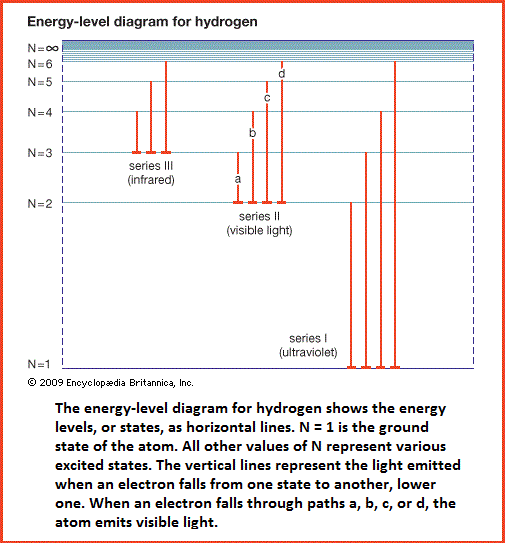
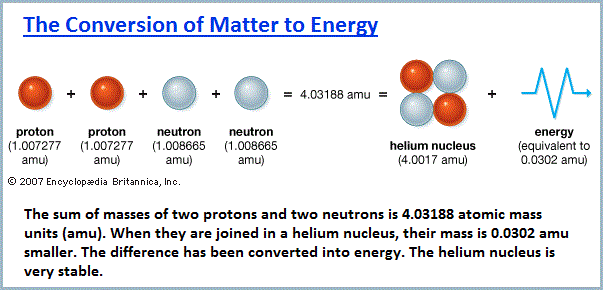
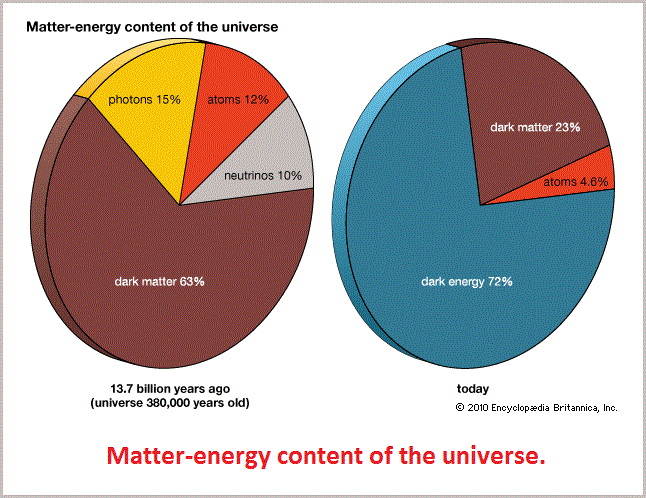

(Looks [and is setup] surprisingly like a simplified integrated circuit.) |
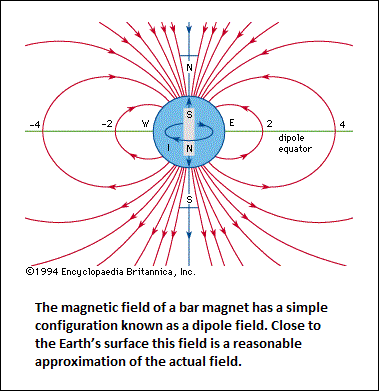 (The magnetic lines of a dipolar Earth look like the outline of a head with crossed-eyes peering from behind spectacles.) |
By looking at energy in terms of its application to present and future computing systems, we necessarily take a look at particle physics with its many objectives concerning atoms. But, philosophically speaking... in terms of a Threesological orientation, we must ask why life forms do not exhibit the same configurations unless it is due to the existence of malleability and fluidity. In other words, the static behavior of atoms can differ from its dynamic behavior. While this may seem an elementary observation, the fact that atomic behavior can change under pressures means that our understanding of particle physics should not be the result of those who are determined to find Universal laws that are not necessarily available to be seen from a human vantage point, much less a vantage point from our Earth observatory and understood by experiments conducted in our Earth laboratory.
If a "three" pattern is dominant in physics, then it seems reasonable to expect this same pattern to be exhibited in molecular, genetic, biological, physiological and anatomical dimensions. Yet, we do not use the whole of physics in our design of a computation system. It is based on the Electron, and from the idea of a (single) electron, we have derived a binary formula due to an "ON/OFF" propensity in our usage. We humans have imposed this. While we are thinking in terms of exploring the developmental area of a trinary (ternary) formula, it may be that we have set our sights too low. Whereas we have developed an Electronic subject area based on the Electron, we have not put to use an Electronic- Neutronic- Protonic application. If from the usage of one particle we get a binary code, then from the usage of three we will have an octagonic code... even though it is but a doubling factor. Unless of course we want to think in terms of a trinary code whose result does not follow a doubling plan like that seen in mitosis (cell division where the full chromosomal quantity is maintained) and meiosis (sex cell division where half the chromosomal number is maintained). Doubling can take place by way of whole numbers or fractions thereof.
The three large particles (electrons- neutrons- protons) are (theoretically) said to be made of three quarks and three anti-quarks, providing us with three pairings. In this situation, a binary organization underlies a trinary one, yet a trinary one is manifest. Hence, we have one particle with a conservation towards a pairing that enables a trinary configuration. Take the following image as an illustrative example. Please note that I added the ideas of "static" and "dynamic" sides for conversational purposes, though it too is a binary "in/out" formula. The "action" between the two points would thus be an "excluded middle" (odd man out) portrayal... though it exists nonetheless.
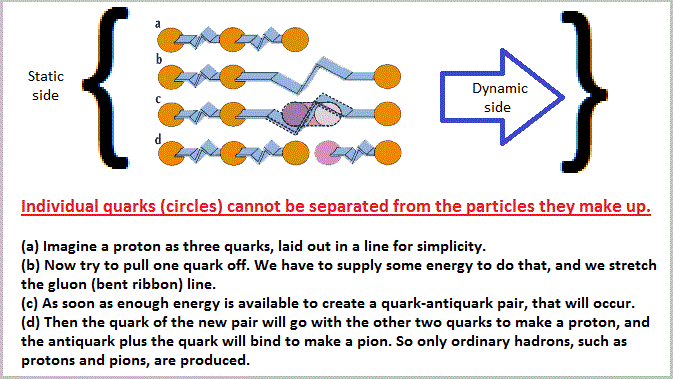
Subject page first Originated (saved into a folder): Thursday, November 13, 2014... 5:50 AM
Page re-Originated: Sunday, 24-Jan-2016... 08:51 AM
Initial Posting: Saturday, 13-Feb-2016... 10:59 AM
Updated Posting: Monday, 24-June-2019... 10:56 AM
Herb O. Buckland
herbobuckland@hotmail.com
